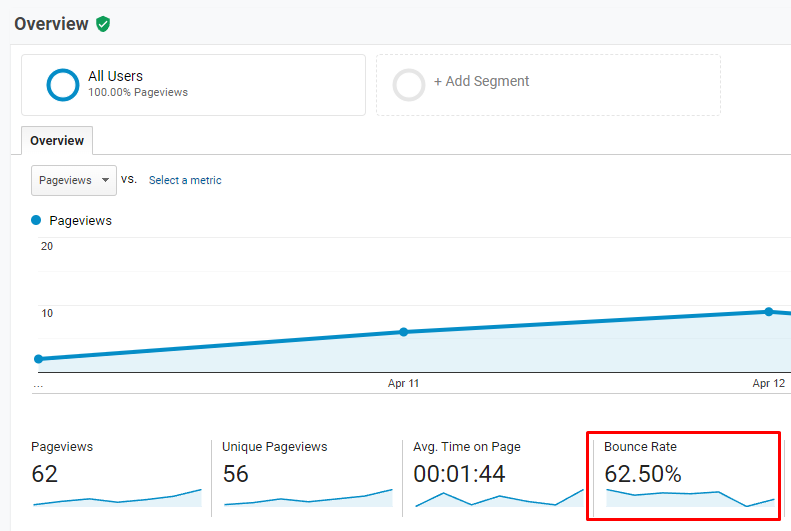Introduction
Disclaimer: This content was written by me (a human), but was touched up and polished with AI.
Greetings, fellow ninjas! Are you ready to level up your digital game with killer SEO strategies? Well, hold on tight because I’m about to blow your mind. There’s a lot of misinformation out there about SEO, and I’m here to set the record straight.
As someone who has worked with countless businesses and who’s been in the game for a while, I’ve seen my fair share of SEO blunders. But fear not, because I’ve got the insider knowledge to help you crush those misconceptions and dominate the search engine rankings.

Let’s face it, we all know what SEO is, but not everyone knows how to use it to its full potential. That’s where I come in. I’m here to share with you the real deal on how to develop an unbeatable SEO strategy that will propel your online visibility to new heights.
In this guide, I’m going to drop some serious knowledge bombs and help you avoid the most common SEO mistakes. From outdated tactics like keyword stuffing to modern strategies like content freshness and social media, I’ve got everything covered.
Whether you’re a seasoned SEO pro or just starting out, I’m confident that you’ll find value in what I have to say. So, are you ready to smash those misconceptions and skyrocket your online visibility? Let’s dive in!
Misconception 1: Use As Many Keywords As Possible
As website owners and businesses strive to improve their online presence, many fall prey to the false belief that using as many keywords as possible will boost their search engine optimization (SEO) rankings. This tactic, called keyword stuffing, involves excessively filling a webpage’s content, metadata, and URLs with keywords in order to manipulate search engine algorithms.
However, Google and other search engines have evolved and become more adept at identifying and penalizing keyword stuffing. Not only does keyword stuffing fail to improve SEO rankings, but it can also harm them by causing a website to be perceived as spammy and relegated to lower search results.

For example, consider these instances of keyword stuffing:
“Welcome to our website! We offer the best shoes in the best shoe store. If you want to buy shoes, you’ve come to the right place. Our shoes are the best shoes for everyone, including men’s shoes, women’s shoes, and children’s shoes. Buy shoes today and receive free shipping!”
“Our dog grooming services include dog grooming, dog washing, dog haircuts, and dog grooming supplies. We are the best dog grooming business for all your dog grooming needs. Visit us for your next dog grooming appointment.”
“We are a fitness gym that offers fitness classes, personal training, fitness equipment, and fitness supplements. Our fitness gym is the best place to achieve your fitness goals. Join our fitness gym today and start your fitness journey!”
These examples are repetitive, unnatural, and do not offer value to the user. Such content not only fails to engage users but also makes it difficult for search engines to understand the page’s relevance and quality.
Instead of resorting to keyword stuffing, website owners should concentrate on using keywords naturally and strategically in high-quality and relevant content. This entails identifying relevant keywords and incorporating them in a way that enhances the user experience, rather than detracting from it.
Here are some alternative strategies for keyword optimization:
- Conducting keyword research to determine relevant keywords and phrases
- Creating high-quality, valuable, and engaging content that naturally incorporates keywords
- Using related keywords and synonyms to enrich the page’s relevance and context
- Using header tags, meta descriptions, and alt tags to emphasize important keywords
- Building high-quality backlinks from reputable websites
In summary, while keyword stuffing may have been a popular SEO tactic in the past, it is no longer effective and can actually harm your website’s ranking. By concentrating on high-quality, valuable content that strategically integrates relevant keywords, website owners can improve their SEO rankings and offer value to their users.
Misconception 2: For Link Building You Need To “Cheat The System”
Link building is a necessary part of any effective SEO strategy. Basically, link building summed up simply involves you getting other websites in your niche to link to you. The way the big G sees it, the more links that point to your website, the bigger an authority you are.
And search engines like to rank websites at the top who are the biggest authorities in their specific industries.
Now unfortunately there’s a lot of misconception and misinformation floating around about link building. Many so-called “SEO experts” will tell you to try and cheat the system by buying backlinks on sites like Fiverr, for example. Others will say to spam blog’s comments sections with links back to your website. And this is just the tip of the iceberg.

Some people will create PBNs, or fake website networks where they host content farms with links back to their websites.
Here’s the thing.
Google is a massive company with some of the smartest programmers in the world. Their algorithms are great at picking up these sort of low quality, spammy black hat SEO techniques being deployed. And if you are caught, you can kiss all your SEO progress goodbye.
For doing this there is the possibility that your website AND domain get blacklisted from the search results. Imagine this: You spend $1,000s on your SEO, buying backlinks, creating content farms and fake websites, etc.
And don’t forget about all the time, effort, and money you most likely spent on a website designer or getting your website started.
All of a sudden…POOF! All of that is gone.
This is the worst case scenario. Instead of your time and investments increasing your ranking, you drop off of the face of the earth.
So how can you get backlinks while following Google’s rules…? Luckily, it’s actually pretty easy! All you need to do is focus on what you already should be: content.
Guest posting is (in my opinion) the best white hat link building method there is. Essentially you do what you usually do, creating blog posts that answer people’s questions in your niche. Except instead of publishing it to your blog, you write it up in Google Docs and then offer other websites owners to publish it on their websites. (Of course, with a link included back to your website.)
The reason guest posting is great is because you are still giving value to searchers. (Google likes this.) Plus you give website owners free content so it’s a win-win with them, too. And in exchange, you get exposure with a new audience and traffic plus authority back to your website.
To get started with guest posting, you’ll want to come up with a list of websites in your niche that are around your size. Don’t start off crazy with websites like Forbes, or the biggest blogs in your niche. You can approach those once you have a portfolio of guest posts to show off.
(This is actually the proper way to get in these high authority publications.)
You need to start small and work your way up.
Then, add the website owners/business owners on social media platforms like Facebook. And don’t be “that guy” that messages them asking them if you can guest post right away. It’s spammy, annoying, rude, and a great way to burn some bridges right off the bat.
Instead, like their posts. Comment on them. Talk to them about your niche/industry. Become someone they recognize first.
Do this with all the website owners in your list for around 3-4 weeks *minimum* before moving on to the next step.
Once you’ve separated yourself from the spammers, it’s time to offer a guest post.
By now, you should already have history messaging these people.
Message them and explain you wanted to guest post on their site since you know them, and you wrote really good content that can help their audience. Bonus points if you can write content around a topic you know they feel strongly about. (This is a big hack!)
For example, when I was guest posting for a client that owned an auto repair shop. They had a big gripe with American car manufacturers like Ford and Chevy, and it seemed to not just be them. I was able to write a blog post explaining why American car companies had fallen off in terms of build quality.
The first website owner we messaged agreed to publish it.
Now, when you are reaching out to these website owners make sure to include a link to your content so they can check it out. Google Docs is the easiest way to do this. Let people see that your content is high quality and will look good on their websites.
When writing your guest post, make sure to follow the good old REVIVE acronym.
Your content should be:
- Relevant
- Engaging
- Valuable
- Informative
- Verified
- Effective
Relevant
Make sure your content is about a topic their audience actually cares about. Look at previous blog posts on the websites in your list and try to find a common theme. Do you notice any topic patterns? If yes, write an article about that.
Engaging
The content should keep people interested all the way through. Make sure you are not bloating your content with fluff. Instead, include everything you think they should know.
Include spots for images and keep things easy to read.
Valuable
Make sure to give as much value as possible in your content. Think of othe relevant questions people will have and answer those in your content, too. You want them walking away feeling glad they read this, and thinking they learned a lot.
Informative
Teach them. Make sure your content is educational. This blog post is a perfect example. I’m teaching you about SEO misconceptions to help you avoid falling into common pitfalls.
Verified
Make sure the information in your content is factual and correct. I know this sounds obvious, but I’ve seen some newbies wing it and put literal guesses in your content. Research is easier than it has ever been before. Take 5 – 10 minutes and look up your topic in Incognito.
See what other websites are saying, and read some Wikipedia articles if necessary.
Effective
Finally, your content should be effective at achieving your business goals. Remember: We’re guest posting for a reason. Make sure to include ONE link (and one link only) in your content. Keep it high quality and not appear spammy.
So as a TLDR, make sure to follow Google’s guidelines and rules for link building. Guest posts are the best white hat way to build links. By creating high quality, valuable content and sharing it on similar websites to yours you please the Google overlords while also getting authority and traffic back to your own website.
Misconception 3: SEO Is A One Time Project
I’ve talked to many business owners who think they can hire an SEO expert for $1,000 and be set for life. Unfortunately, this isn’t how things work. SEO is an ongoing process that requires consistent content publishing and optimization.
Remember: There are millions of websites vying for attention nowadays, and if you stop publishing content your competitors are going to outrank you. That’s just how it is. Google wants to rank websites with a lot of content at the top. If your competitors out-content you by publishing consistently, and you don’t…well, it’s not going to end well for you.
However, this is also a good thing for you. In my experience most small business owners just don’t have time for their blog content, and this is where you can gain an unfair advantage. By investing the time to publish a few blog posts a week, you can easily outrank these people. So don’t be intimidated – instead be excited!

On top of this, SEO is also a constantly evolving landscape. It’s important to stay up to date with the latest trends and strategies so you can keep your website up to date.
When you publish new content or add new pages to your website you need to optimize them with keywords, images, schema, and more.
Now what I just covered works for all business types in keeping you ranked, but if you’re a local business there’s a few other things you’ll need to keep up with outside of content. Posting photos and text based posts to your Google My Business listing is another big deal for local SEO. The more you do this, the higher you will rank as your listing will constantly have fresh content.
This is another one of those things the competitors are most likely slacking on.
There is actually a direct correlation between the number of Photos posted to a Google My Business listing and the number of views it has. You can take photos of what’s going on at your business with your smartphone. Show off your team working, and snap some pictures of your latest products.
If you run a service based business, just show off your people doing that service. Show a “before” and “after” of what the client had. Not only does this boost your listing’s visibility, but prospects like seeing this. It makes them trust your business as it feels real to them.
Finally, reviews are important to have regularly coming in. I’ve touched on reviews a lot in my other blog posts and courses for a good reason: They make up over 30% of your local SEO ranking! They are a HUGE factor and you need to have them under control.
So how do you do it…?
Well one of the easiest ways to guarantee that a fresh stream of reviews is coming in is to attach a “Leave A Review” sheet to each invoice/receipt you give to customers. You can design one in Google Docs or Microsoft Word. Make sure to include step by step instructions on how to do it. You can also add a QR code that people can scan with their phone to automatically take them to your Google My Business listing.
Once this is done, all you have to do is make it a habit to staple these to invoices/receipts. That way you won’t forget to give customers one, and it will bring you more reviews automatically, without you having to do anything.
Besides getting reviews it’s important to respond to them. You can do this inside your Google My Business dashboard. Make sure to thank customers who left positive reviews and also respond to negative reviews. I know nobody likes looking at negative reviews of their own businesses, but this is important because of two reasons:
- Perception
- SEO
If people see the business owner owning up to mistakes and apologizing, it shows that they care. This can turn a negative review into a positive review for a prospect who is deciding whether or not to go with your business for a product/service. Also, it helps boost your SEO.
I recommend checking your Google My Business listing at least once per day. Of course, you will get email notifications for your listing too.
Misconception 4: Content Doesn’t Matter

Many business owners I work with don’t realize the power of content. In fact, that’s usually why they are struggling so much with their SEO efforts before I come in to work with them. Content is the MOST important SEO factor.
I’ve talked about content in depth on this blog before. But as a quick recap, here’s why content matters.
The Customer Journey
Your customers are on a journey online. And this should be familiar to you, because it’s a journey you yourself have been on many times. Have you ever typed a question into Google? If yes, you’ve done this too.
Then you see a website listed in the search results and click to read their article or blog post about a topic.
This is what happens to your customers.
Now why does this matter to you and your business…?
Well, this should get you hyped because you can snag these people in the search results.
Let’s say for example you run a landscaping business.
And someone types into Google “what to know when hiring a landscaper”
If you show up and they click on your website, you just brought someone onto your website who is clearly doing research before hiring a landscaper.
And the best part is this:
As they start to read your content, you automatically build trust and authority with this prospect.
By the end of reading your blog post, they don’t want to do business with anyone but you.
But this isn’t the real magic of content.
The real magic is this:
Your content works for you 24/7, 365. It’s always bringing people in to your website, and you don’t have to do anything once your content is published (besides occasionally publish more of it.)
And guess what?
The more content you have, the more traffic your website will get.
Why Google Likes Content
Okay, so why does Google care about blog posts…? Why is it the secret sauce to successful SEO?
Well, that’s because your content gives the searcher value. And if the searcher feels like their question was answered…well of course they’re going to come back and use their search engine again at a later date. Remember Google’s mission is to organize the information on the internet and make it readily available for users.
So how does Google know which content to rank…? Well, they have a lot of complex algorithms with hundreds and hundreds of factors. Nobody fully knows all the factors, or every detail of these algorithms. However, some big SEO experts have managed to piece together what’s most important, and that’s why we’re where we are. That brings us back to content.
And that is why content is king for SEO.
The more content you have on your website, the more of an authority you are in the eyes of the big G. And the more of an authority you are, the higher they will display you in the search engine results pages.
Content Applies To All Businesses
One of the common objections I hear from business owners is this:
“Well that’s great Gabriel, but content isn’t something that would work for my business.”
This is 100% wrong.
I’ve seen pizzerias skyrocket to the top of search because they’ve published content on their blog pages.
Even if your business is a local one, content still applies to you.
Yes, there’s more to local SEO than just content.
But if you want to rank high in the organic results (the part of search below the Google Maps widget) then you’ll want to make sure you’re keeping up with your blog posts.
Misconception 5: SEO Is About Ranking #1
I see so many SEOs and business owners get completely obsessed with ranking #1. Heck, I often use that phrase “ranking #1” often in my blog posts. So why are we so fixated on it, and why am I saying it isn’t the case…?

Well, ranking #1 means showing up first for a keyword or search phrase. As SEOs, this is what we strive for. For example, if I own a local Italian restaurant and someone types in “Italian restaurant near me” I damn well want to show up for this search query.
But sometimes not showing up #1 is perfectly okay.
Let’s say I run an ecommerce store that sells trading cards. Maybe I don’t rank #1 for “buy trading cards online”. Now this would seem like a bad thing, but it actually isn’t.
For this example, let’s pretend that my biggest sellers are Pokémon cards. If I rank for these in Google, I still make a ton of revenue. And that’s the key to all of this.
If your business is new, it might be hard to rank for your primary keyword. However, you can still rank for individual products and services, especially if you have pages (with content) dedicated specifically to them. And this is why it isn’t the end of the world if you don’t rank #1.
Even if your individual trading card pages rank #2, if you have 100s of them you will still get a decent amount of traffic. (More than enough to have revenue and profit.)
Now besides the example I just illustrated talking about other content ranking, here are metrics you should be more focused on than just ranking #1:
Traffic
Let’s start with the most obvious one: traffic. The more people that visit your site, the better. You can track this using Google Analytics and Google Search Console. If you don’t yet have these set up, you need to do so immediately.
I cover how to set these up in Local SEO Shuriken, my local SEO course.
Pay attention to what pages are bringing in the most visitors from Google. You may find that there are content topics that seem to always rank for your website. If this is the case, I recommend creating more blog posts around these things.
Now traffic is great. However, you need to make sure you are achieving your business goals. You can have a ton of traffic, but if they don’t do anything that makes your business money then there’s no point. And that brings us to our second metric…
Conversions
Are you converting browsers into paying customers…? I’ve worked with a few clients who had thousands of visitors a month, but weren’t making money. You don’t want to be in this position. The good news is that this is an easy problem to fix!
Including calls to action (or CTAs) in your content can help you get conversions automatically. Make sure to include these at the top and bottom of every blog post you publish. You may notice I have these on this page. Above the blog post, there’s an opt-in box where you can enter your email to get access to my free mini SEO course.

You see, that’s because my goal for my business is to get email subscribers because I have a funnel that converts them into customers with offers for my paid SEO courses. (Being fully transparent here, I preach what I teach and do.) Besides getting email subscribers, these are some common calls to action goals:
- Visit the business
- Buy a product/service
- Schedule an appointment
- Call your business
You can set up all of these things as buttons using the built-in editor in WordPress.
Also, if your goal is to get calls I recommend having a button in the top right corner of your website. This is a great way to get a lot of calls quickly, and you can use tel: in the URL to automatically open up the user’s dial pad if they tap it and they are using their smartphone.
If you aren’t sure what call to action to use, try spying on your competitors’ websites in Incognito and see what theirs are. Or even better, look at the #1 ranking businesses in some of the biggest cities in your country. For example, I’ll often look at local businesses ranking #1 in New York City, Los Angeles, and Dallas.
This gives me insight into what works to get ranked and what website layout to have, too. There’s no need to reinvent the wheel when you have real websites as examples you can look at that clearly showcase that’s currently working. Work smart, not hard!
Bounce Rate
This one isn’t talked about enough in the SEO circles I am a part of. Bouncing is really bad if it is happening often on your website. If you aren’t familiar, a bounce is when a prospect lands on a page on your website and quickly leaves, usually in a few seconds.
This sends a signal to Google that your content isn’t high quality and that your website may be spammy. You do NOT want this to be happening. If the majority of your visitors are bouncing off-site Google is going to drop your website lower in the search results.

So how can you see what your bounce rate is…? You can see what your current bounce rate is inside of Google Analytics. (Again, another reason to have this set up and to know how to use it.)
I’m going to give you the rule of thumb for bounce rate.
A bounce rate between 40% and 60% is normal, as most people will leave your website after some time. However, if you’re seeing 80% – 90% this is a big red flag and something needs to be fixed. It’s important to mention you want to look at bounce rate along with the next metric we are going to be talking about in a moment. (But we’ll get to that.)
Before I move on I want to talk about the most common culprits that cause high bounce rate, so you can check these if you’re having problems. 99% of the time a high bounce rate is due to one of these things:
Bad Website Design
If your website is ugly…well I hate to break it to you, but people are going to leave. We’re not living in the 90s anymore. Make sure your website is built using WordPress and has a decent theme installed. I cover how to build an epic website for insane SEO without having to know any coding in Local SEO Shuriken.
Slow Loading Times
Nobody has dial-up internet anymore. If your website takes more than 5 seconds to load, people aren’t going to wait for it. Make sure your website is optimized to be fast.
You can do things like compress your images, use a Content Delivery Network (CDN), use caching, and have solid hosting to speed up your website. For time’s sake I’m not going to get into these things here, as optimizing for speed is its own iceberg. But I’ll say this: don’t use GoDaddy for hosting!
Every single website I’ve done SEO for that had GoDaddy as a host has had hordenous loading times and major outages, too. Their hosting just isn’t cut out for SEO or reliability – period. When you purchase the cheapest plan available from these large hosting providers it isn’t going to get you great results for SEO.
I know dedicated hosting can be expensive, but you don’t need to go that route. What I encourage you to do is to Google “best hosting for SEO” followed by the year. Don’t click on people’s blogs, look at Reddit threads and forums instead. Try to see what real people are saying. That’s how to know who to go through for hosting.
Low Quality Content
If your content is hard to read, poorly written, or not factually correct you are going to see a lot of bounces. Adding AI and ChatGPT into the mix, make sure you yourself are writing your content. People can spot AI generated text and nobody wants to read it.
By spending the time necessary to create genuinely good content, you are ultimately saving time for yourself later on.

Make sure to split up your text so each paragraph only has 3-5 sentences. Include images in between paragraphs so your blog post doesn’t look like a giant wall of text, that would intimidate anyone – even me. I recommend having a Table of Contents as well, just like how I have on this blog.
You’ll notice at the top of the page you can click on any of the headings to automatically scroll down to them. This allows your readers to skim read your content, which keeps them on the page longer and decreases the odds they are going to bounce off-site. You can easily add this to your website for free with the Easy Table of Contents plugin for WordPress.
Bad User Experience
What I just mentioned with the Table of Contents was a perfect example of improving user experience. Your website needs to be navigable. Look at the biggest blogs in your niche and see what they have implemented for features to improve reading their blog posts. Then do the same. 99% of the time there is a WordPress plugin for it.
No Call To Action
Luckily, we already touched on this one. If your blog posts don’t have an easily visible call to actions, go back and update them. Make sure to add one at the top and bottom of each post, as some people will skim or won’t make it to the bottom.
Time On Site
This one is really big. How long are users staying? The bigger the number, the better things are. Make sure to keep your content engaging and captivating for your readers. Include images, videos, and other forms of media on your services, about, contact, and home pages of your website.
Backlinks
Ah yes, I’m sure you were waiting for this. There is a crazy obsession with backlinks in the SEO world, and for good reason. The more links you have pointing to your website, the higher your authority is in the eyes of search engines. But this example is too specific.
You see, when it comes to backlinks quality matters more than quantity. For example, one backlink from Forbes will give you more “SEO juice” than 100 backlinks from no-name websites. This is why you need to be strategic with your link building.
Just like how high quality links can skyrocket your ranking, lots of low quality links can also cause you to drop in the search results. I recommend disavowing bad links. This is a process where you essentially tell Google you don’t want certain backlinks to count.
You can see what websites have linked to yours inside Google Search Console.
Sales
Finally, we have the most obvious (yet somehow overlooked) metric for SEO. Are your actual sales increasing? And if so, is it coming from your SEO efforts? It’s important that you track where your customers are coming from.
Ask people who visit your storefront where they heard about you, and keep a tally sheet. This is a great nifty little hack to track which marketing channels are bringing in the most customers. If your “SEO” column gets more tallies every month, this is a sign your SEO results are working!
Misconception 6: SEO Is A Mysterious Back Box

A lot of people somehow think SEO is “magical” or “mysterious” but the reality is it’s just like any other marketing skill. If you are hungry for knowledge, and continue to educate yourself you’ll learn what needs to be done to rank your business. If you’ve ever learned a skill before, do what you did for that skill.
Go to classes, enroll in online courses, and buy books on SEO.
Look, I’m not going to sugarcoat it. SEO is a massive topic to learn about, and there’s so many rabbit holes you can find yourself going down. However, it’s important not to get overwhelmed.
Learning search engine optimization is like learning anything else. One book or course isn’t going to allow you to fully master it. You have to go down the rabbit hole.
Follow the big SEO guys and read their blog posts. Subscribe to their email newsletters. Watch the large SEO YouTubers.
Here’s a good rule of thumb:
In the beginning 50% of your time should be spent learning SEO, and 50% should be spent actually implementing what you’ve learned.
I know time can be a finite resource for many business owners, but I assure you it’s 100% worth it. I learned SEO by going through online course after online course, and putting the pieces of the puzzle together in my mind. I read, read, watched, and listened to what the experts said.
SEO Experts You Should Be Following
Besides my blog, here are some SEO experts I recommend following:
- Brian Dean (Blog)
- Neil Patel (Blog)
- Income School (YouTube Channel)
- Google’s John Mueller (Twitter)
Even if you plan on hiring a SEO or company to do it for you, you want to be educated so you don’t get taken for a ride. Understand the most important ranking factors for SEO and what you or your people allocated to it need to be spending their time doing.
The TLDR

I know this has been a long post, but I wanted to go deep and clear the air. Hopefully now you have a better understanding of common SEO myths versus what actually matters. I’m going to give you a quick recap. These are the 5 biggest SEO misconceptions:
1. Use As Many Keywords As Possible
Sparsely place keywords in your content. Make sure to use synonyms or related search phases, don’t use the same one over and over. Google does NOT like it when you artificially fill your content with keywords just for the sake of doing it.
Be responsible and keep your content high quality.
2. For Link Building You Need To “Cheat The System”
Black hat link building strategies will inevitably backfire on you, lowering your ranking instead of raising it like you want. Do NOT buy backlinks on websites like Fiverr – that’s just asking for Google to penalize you.
Instead, focus on guest posting for link building. Create high quality, valuable content and build a network of connections with other website owners in your niche. Doing this will ensure your ranking only goes up over time.
3. SEO Is A One Time Project
SEO is a continuous process. You are never really done with ranking your website. Why do you think I wrote this very blog post…?
Yes, don’t get me wrong: 90% of SEO is a one-time deal. But the other 10% is what you make into a routine. Things like publishing blog posts on a consistent schedule, posting to your Google My Business listing, asking customers for reviews, and guest posting are all things you need to keep doing over time.
4. Content Doesn’t Matter
Content matters the MOST for SEO. It’s so ironic people think that it doesn’t. I get it: content isn’t always fun.
But you have to do what’s necessary in order to get the result.
Content is what moves the needle. It builds expertise, authority, and trust (or EAT) with search engines. This is what separates you from your competition.
Writing blog posts doesn’t have to be hard, and the more you do it the easier it becomes. Grab your headphones, and blast music. Make writing them fun or at least bearable for you.
If you aren’t a fast typer, you can transcribe your content with your voice. Google Docs has this feature built-in, and it’s free. There is always a way, stop making excuses and get writing!
5. SEO Is About Ranking #1
Finally, SEO is not always about ranking #1. Yes, ranking #1 is something you should work towards and can absolutely make a difference for your business. But there are most likely other keywords besides your primary one that can drastically increase your traffic, leads, and revenue in your business.
Spend time optimizing your individual products and services to rank. After all, you want to show up at the top of search when people are looking for these things. I recommend having individual web pages for each service you offer, and having them be sub-menu items under the link to your website’s “Services” page.
6. SEO Is A Mysterious Back Box
SEO is a skill you can learn, just like any other. Educate yourself by reading books, watching courses, and following the biggest SEO experts online. Pay attention and pick out the similarities that all these people are saying.
Be hungry for knowledge and always continue learning. Remember that SEO is an ever-changing and evolving landscape. Stay up to date with the latest trends, strategies, and information out there.
That Wraps It Up!
Now you can lead a horse to water, but you can’t make it drink. Make sure to actually go implement what you’ve learned from this post. Hopefully I’ve helped improve your SEO process so you can focus your time on doing the things that are going to move the needle the most.
Want To Become A SEO Ninja…?

Are you ready to take your business to the next level with proven and powerful SEO strategies? Enroll in Local SEO Shuriken, the ultimate course that guides you through every step in easy to follow video lessons. Don’t miss out on this game changing opportunity to dominate the search engine rankings and drive more traffic to your business – enroll now!


